.gif)
Parks for America
MENU
|
Parks for America
|

|
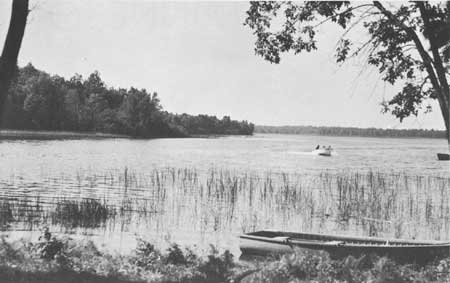
|
| Greer Lake, typical of Minnesota's vast wealth of lakes, has been proposed as a potential State park in Crow Wing County. |
MINNESOTA
MINNESOTA, one of the Nation's outstanding lake regions, has diversified resources for out door recreation.
The State population in 1960 was 3,413,864, a 14-percent increase since 1950. The population density is 43 persons per square mile. Over a third of the people live in the Minneapolis-St. Paul urbanized area. Projections indicate a State population of 4,297,000 by 1976.
Tourism ranks fourth in the State's economy, with an estimated expenditure of $325 million in 1958.
Most of the upper half of the State is attractively wooded. Lakes are distributed widely and, together with the rivers, comprise the foremost canoeing area of the United States. Summer daytime temperatures are moderate and nights pleasantly cool, and there is relief from the frequent hot weather and pollen of the midwestern plains. Winters are prolonged.
There are a number of historic sites associated with the Indians, early French exploration, the voyageurs, and westward expansion. Fort Snelling and the James J. Hill Home possess exceptional value in commemorating the history of the United States and are eligible for Registered National Historic Landmark status.
Wildlife is diversified, and the lakes are famous for variety of fish.
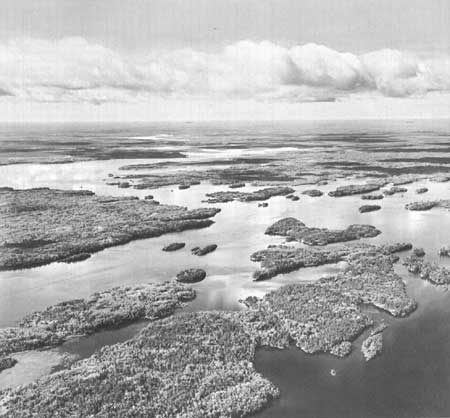
|
| Islands pattern Rainy Lake where Kabetogama Peninsula meets Black Bay. Here voyageurs' routes now offer exceptional opportunities for recreational boating. |
EXISTING PUBLIC AREAS
NATIONAL: The National Park Service administers 591 acres in 2 national monuments which had an attendance of 137,000 in 1960. The Forest Service administers 2 national forests totaling 2,523,825 acres in which there are 42 areas developed for recreation, and the Boundary Waters Canoe Area, a wilderness area. The Bureau of Sport Fisheries and Wildlife administers five national wildlife refuges totaling 138,803 acres. The Bureau of Land Management manages 101,000 acres of public domain. The Corps of Engineers administers 470,100 acres in 21 water-control projects.
STATE: The Division of State Parks administers 73 areas, including 9 small historic sites not shown on the map, with a total of 129,116 acres. The 1960 attendance was 3,214,000. The State Historical Society has three sites amounting to 123 acres. The State Highway Department maintains 14 major way sides containing 134 acres, and 306 minor waysides.
The State Division of Forestry manages 2,428,757 acres in 33 areas; 200 acres in 25 sites are developed for primitive recreation. The Division of Game and Fish administers 629,387 acres in 18 areas and 691 public access sites totaling 1,300 acres.
LOCAL: There are 3,210 acres in 22 local parks near the Twin Cities, and 2,432 acres in 32 county parks in other parts of the State.
QUASI-PUBLIC AND PRIVATE: Areas include one historic site of 3 acres and four nature preserves of 3,520 acres.
PRIVATE ENTERPRISE: A significant role is played by private enterprise in providing lakeshore resorts, cabins, and campgrounds.
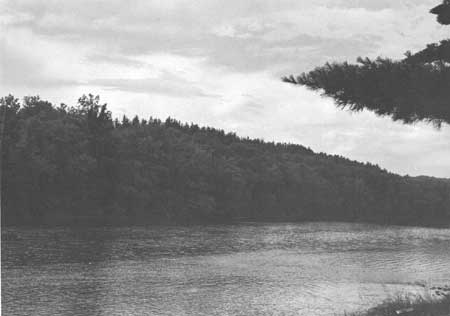
|
| A quiet reach of the St. Croix River. The scenic and recreational values of such free-flowing streams should be preserved. |
PARK AND RELATED NEEDS
There is need to protect more land in southeastern wooded valleys, on the shore of Lake Superior and along the St. Croix River. More border lakes should be in public ownership. There are considerable unmet recreation needs near metropolitan centers, where additional State parks are urgently needed.
Existing State park and recreation areas provide 129,116 acres for 3,413,864 residents. By 1976 the State parks system should consist of over 200,000 acres.
With the approximately 6,000 acres of existing local areas and 15,208 acres listed as potential, perhaps as much as 50,000 acres of local areas will be needed additionally by 1976.
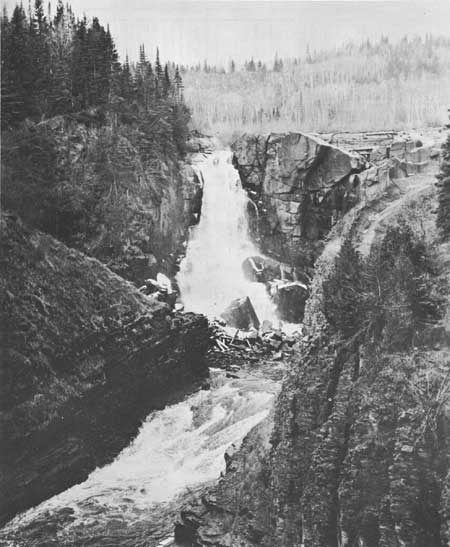
|
| The high falls of the Pigeon River could be part of the suggested Pigeon Poiint Indian Park. |
RECOMMENDATIONS
Existing recreation resources and many potential areas are shown on the accompanying tabulation and map. Vigorous action on the following recommendations can, it is felt, help to provide needed outdoor recreation opportunities for public use and enjoyment.
NATIONAL: Further study of the Kabetogama Lake area for possible park purposes. Establishment of Pigeon Point Indian Park by the Grand Portage Band of Chippewa Indians.
STATE: Expansion of the State park system to preserve valuable resources by addition of 34 park and recreation areas and major additions to 25 existing areas. Further study of seven suggested sites. Designation and protection for 14 canoe trails, 8 scenic roads, and 4 free-flowing streams.
LOCAL: Establishment of 25 parks to meet needs, and further study of 1 suggested area.
Supporting recommendations include:
1. Preservation of high-quality areas in the northern section as State parks.
2. State-owned land on lakeshores should be withheld from cabinsite leasing or other development until determination of public recreation or related uses can be made. Public access to these areas should be reserved.
3. Continuation of the Division of Forestry program of administering primitive-type campgrounds in State forests.
4. Cooperative planning between counties should be fostered and technical assistance provided in the formation of park systems through the Association of County Commissioners. County park systems should be established in counties where there is a need for such action.
5. Advancement of the Great River Road project through continued cooperation of State and Federal agencies.
6. Continued expansion of the excellent system of waysides, with priority given to plans for serving recreation needs along Interstate Route 90.
(Table omitted from online edition)
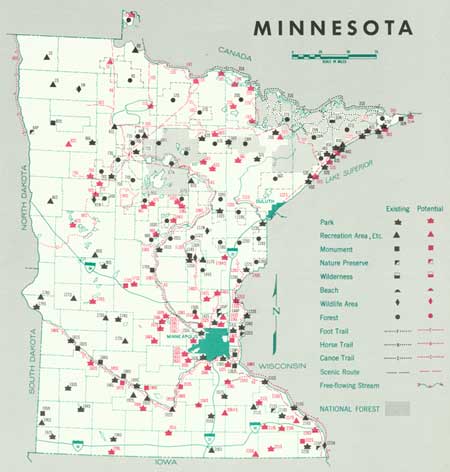
|
| (click on image for an enlargement in a new window) |
NEXT >>>
|
|
Last Modified: Mon, Sep 6 2004 10:00:00 pm PDT
parks_america/minnesota.htm
 Top
Top